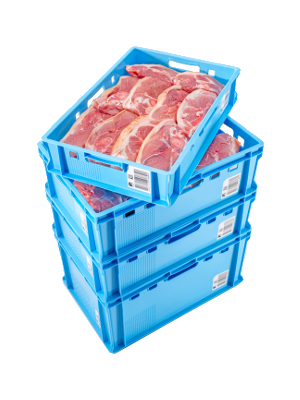The inotec GmbH head office in Germany is home to its laboratory which develops, tests and produces durable and secure barcode and RFID labelling solutions. As part of the research and testing process, inotec values the importance of the GS1 UK standards to ensure that labels consistently meet the high quality needed for accuracy and reliability.
What is the GS1 UK standard for labels?
The GS1 UK organisation is an industry regulator in charge of standardising the layout and coding system used with labels that are applied to all logistics units such as pallets or crates. The GS1 barcode standard ensures that barcode labels accurately encode information such as product numbers, serial numbers and batch numbers. Barcode labels are essential as they enable parties like retailers, manufacturers and hospitals to automatically identify and track products as they move through the supply chain.
To meet GS1 standards, barcode labels must meet the specified structured layout and data coding criteria. The standards define how barcode digits should be laid out and ordered including additional label check numbers. The GS1 barcode standard dictates the structure of the barcode and order of the digits, for example, check numbers must sit at the end. This standardisation provides a complete guide on how companies and manufacturers should build barcode numbers which ensures that a consistent format is used by all.
The GS1 barcode standard is also responsible for allocating European Article Number codes (EAN). An EAN code is structured in a fixed way and each company or brand name gets assigned its own prefix number. This means that their codes will always start with the same numbers and this identifier can only be used by the individual company.
ISO certification for further labelling standards
In addition to the GS1 standard, inotec also follows the ISO 9001:2000 quality management certification which dictates the standards required for the quality of barcodes to ensure they meet readability expectations and regulatory requirements. Rated from A (best) to F (fail), labels are checked for qualities including the sharpness of the barcode lines and the width between the black and white lines. The ISO certification ensures that all of inotec’s labels meet a standardised quality which is recognisable across the industry.
Monitoring labelling standards – multiple quality checks by inotec
To monitor labelling standards and ensure they are meeting the required criteria, inotec carries out quality checks both before printing a batch of labels and after. When setting up the printers, inotec also prints a test set of labels before production to ensure they print at the required standards.
The production facility uses barcode readers on the different production machines to constantly ensure the barcode labels are readable. Additionally, inotec has specialist software that checks the structure and layout of the codes to ensure they are correct. The software can also simulate barcode reading technology using PDF file previews of the layout of the barcodes. This determines the quality and structure of the barcodes after printing to ensure they will read and print correctly. This includes meeting the GS1 standard criteria for printing the right barcode number structure and barcode lines.
Once the batch is printed, it is then examined by the quality control department at the inotec production facility in Germany. The quality control centre inspects and tests every single label within a batch to ensure they not only meet visual quality checks but also that the barcodes scan correctly and hold data accurately.
The importance of regulating labelling standards
By following the industry standards and meeting its guidelines, inotec’s customers can be assured that its labels are guaranteed to be of the highest quality and durability. At the company’s R & D laboratory in Germany, inotec develops and repeatedly tests its labelling solutions to ensure they achieve the highest standards of readability for ultimate efficiency.
This is especially important for industries including grocery and supermarkets as they need to ensure barcodes on totes and crates can be read accurately at speed and also withstand conditions such as refrigeration and freezing.
In-mould barcode labelling for blue meat crates
Within the food industry, blue plastic meat crates and totes are used throughout Europe for the movement of raw meat from abattoirs and butchers. This has led to a demand within the meat crate industry for in-mould labels.
Throughout Europe, the blue meat crates are made by several different manufacturers but those companies all have one thing in common – they all use inotec’s in-mould labelling technology for the crates. The reason for this is that inotec is capable of meeting the high standards required for in-mould labels used on blue meat crates.
The production of in-mould labels has been awarded to inotec as the GS1 organisation is confident in inotec’s abilities to control data without errors. Furthermore, inotec has the technology and capabilities to fully test in-mould labels for plastic crates and totes in-house to ensure they withstand all possible risk and damage. This is essential for reliability and accuracy.
Labelling standards – solutions by inotec
As labelling specialists, inotec can develop unique labelling solutions to meet your production needs including in-mould labels, adhesive labels and RFID labels. If you would like to discuss labelling solutions with inotec UK, contact the team on 01482 654466 or email info@inotec.co.uk for more information.

